the death of
captain mantell
PART ONE OF THREE
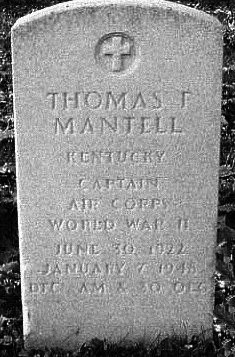 THIS IS THE STORY of a twenty-five year old fighter pilot who died seven decades ago while in pursuit of an unknown flying object. THIS IS THE STORY of a twenty-five year old fighter pilot who died seven decades ago while in pursuit of an unknown flying object.
But it is a story that over the decades has become so entwined with myths and legends -- often told through the filter of various agendas, and further obscured by vague or conflicting contemporaneous reports -- that the best any researcher can hope to accomplish is to sort fact from fiction, and then to take only the facts and either reconcile whatever conflicts lie therein... or if those facts are irreconcilable, to present variations on a basic story whose truth will only ever be approximately known.
This then, is not the legend as it stands today -- conventional wisdom told and repeated by rote in dozens of books and across a spectrum of web sites. And those who seek the simplistic, easily-told tale should turn elsewhere for satisfaction.
For this is a long -- very long -- and intricate examination of the details of the matter, and the lingering questions which remain unanswered to this very day.
And because it cannot be fully appreciated when told in one sitting, this is the first of a three-part examination of the events -- both preceding and following -- the death of Captain Mantell.
 Left: A news feature from December 31, 1947 lists 'flying saucers' as the top zany story of the year. Left: A news feature from December 31, 1947 lists 'flying saucers' as the top zany story of the year.
AS 1947 ENDED AND 1948 DAWNED, newspapers across the nation ran summaries of the most important events of 1947.
Treated with scorn throughout: the 'flying disc' reports of the previous summer -- which had for a time been their front-page banner headlines, giving birth and sustenance to the modern phenomenon.
The New York Times, under the banner 'The Once Flying Saucers', put it this way:
No review of Important Events of the Old Year would be complete without a mention of the flying saucers. At the time they made their appearance, more or less everywhere at once, it was hot enough to melt some of the mountains of snow behind which New York is hiding (and would that it was that hot again, if only for a day or two!).
Looking back to what transpired then, Dr. C.C. Wylie, of the University of Iowa is concerned about the mass hysteria which the saucers brought in their wake. In a report to the American Association for the Advancement of Science he had this to say about the causes of the flying saucers: "In driving west in the morning hours, if an airplane crosses the road some distance ahead, the sunlight reflected from its windows may obliterate the outline of the plane, giving the appearance of a round or oval, and brilliant, spot of light moving about in the sky."
That seems a reasonable explanation. Dr. Wylie notes that a good many pranksters contributed to the saucer legend, one way or another, and that a fanciful literature was built up. He says that the first reports of saucers were not investigated, for the reason that there is no national policy of getting at the real facts behind such phenomena...
But Wylie was mistaken in believing that there was "no national policy of getting at the real facts behind such phenomena". From the first days of reports of 'flying discs' (as they were then commonly called) in early summer, 1947, highly-placed intelligence officials at both the Pentagon in Washington and at Air Materiel Command (AMC) at Wright Field, Ohio, had been working the problem on an ad-hoc basis. The results of those efforts were summed by Lieutenant General Nathan F. Twining -- commander of AMC -- in a September, 1947 memo, which stated that, "The phenomenon is something real and not visionary or fictitious." Further, Twining recommended that...
Headquarters, Army Air Forces issue a directive assigning a priority, security classification and Code name for a detailed study of this matter to include the preparation of complete sets of all available and pertinent data which will then be made available to the Army, Navy, Atomic Energy Commission, JRDB, the Air Force Scientific Advisory Group, NACA, and the RAND and NEPA projects for comments and recommendations, with a preliminary report to be forwarded within 15 days of receipt of the data and a detailed report thereafter every 30 days as the investigation develops. A complete interchange of data should be affected.
The result was the initiation of Project Sign -- the first official Air Force investigation into the phenomenon (renamed two years later as Project Grudge and finally as Project Blue Book). Centered at the Technical Intelligence Division of Air Materiel Command at Wright Field in Dayton, Ohio, Sign was not set to begin officially until January 22, 1948.
But fate intervened, and just after the turn of the year its first big investigative case -- that of Captain Mantell -- tragically came its way.

Maysville and Mannsville, Kentucky, reported as the original sighting points of the flying object.
IT ALL BEGAN on January 7, 1948, somewhere over the state of Kentucky.
This is how one version of the that day begins...
On January 7 all of the late papers in the U.S. carried headlines similar to those in the Louisville Courier: "F-51 and Capt. Mantell Destroyed Chasing Flying Saucer." This was Volume I of "The Classics," the Mantell Incident.
At one-fifteen on that afternoon the control tower operators at Godman AFB, outside Louisville, Kentucky, received a telephone call from the Kentucky State Highway Patrol. The patrol wanted to know if Godman Tower knew anything about any unusual aircraft in the vicinity. Several people from Maysville, Kentucky, a small town 80 miles east of Louisville, had reported seeing a strange aircraft.
-- Captain Ed Ruppelt, former chief of the Air Force Project Blue Book
The Report on Unidentified Flying Objects, 1956
And thus, just five sentences into the story, the confusion starts.
For this is the slightly different contemporaneous story told by the man at the control tower, in his official statement to Project Sign investigators...
I, T Sgt Quinton A Blackwell, AF18162475, was on duty as chief operator in the Control Tower at Godman Field, Ky. on the afternoon of 7 January 1948. Up until 1315 or 1320 matters were routine. At approximately that time I received a telephone call from Sgt Cook, Col Hix's office, stating that according to Ft Knox Military Police and "E" Town state police, a large curcular [sic] object from 250 to 300 ft in diameter over Mansville, Ky. and requested I check with Army Flight Service to see if any unusual type aircraft was in that vicinity.
The minor difference in the versions: the call was not made directly to the control tower as in Ruppelt's version, but made via Col. Hix (commander at Godman), who then had Sgt Cook from his office call the control tower.
The bigger difference between the two versions... Ruppelt says the sighting was in Maysville, while Blackwell says Mansville (while there is no Mansville, Kentucky, there is a Mannsville).
And this is how it was told by the man working with T Sgt Blackwell, in his official statement...
I, Pfc Stanley Oliver, was on duty in the Control Tower at Godman Field on the afternoon of 7 January 1948. When first heard of the object in the sky about 1320 CST, we received a phone call from Colonel Hix's office that a large object was sighted at Mansville, Kentucky, the supposed object was supposed to be about 250 feet to 300 feet in diameter at 1330 CST or more.
So both those men believed the sighting was Man(n)sville, some 150 miles southeast of Maysville.
But another participant says it was Maysville:
STATEMENT OF LT PAUL I ORNER
Following is an account of the sighting of unknown objects from the Control Tower on 7 January 48 at Godman Field:
On the above date at approximately 1400 CST a report came in to the Control Tower through M Sgt Cook of a report of an unidentified object flying at terrific speed in the vicinity of Maysville. This call was cancelled minutes later by the Military Police at Fort Knox who had instructions from the Kentucky State Police.
As for the man who ordered Sgt Cook to notify the tower -- commanding officer Col. Hix -- his official statement makes no mention of either Man(n)sville or Maysville...
At approximately 1300 hrs. a call came to this Headquarters from State Police, reporting a flying object near Elizabethtown. Another report came in from Madisonville about ten minutes later. A third call came in from Lexington, Kentucky. (All towns are south of Godman Field).
We alerted the Tower to be on the lookout for flying objects.
So now the map of reported sightings looked like this...

But the reported locations wouldn't end there. Immediately following T Sgt Blackwell's statement given above, he said...
Flight Service advised negative on the aircraft and took the other info, requesting out [sic] CO verify the story. Shortly afterward Flight Service gave Godman Tower positions on the object over Irvington, Ky. then Owensboro, Ky. of about the same size and description.
And Lt. Orner's statement mirrors this...
Very soon thereafter several reports of the same nature came from Flight Service saying this object was over Irvington and Owensboro, Kentucky.
Thus, the sightings were now reported as...

There is one more contemporaneous report of relevance, filed from Wright Field in Ohio. Titled 'Report of Unusual Incident', it was written soon after the culmination of events, perhaps within hours. It reviews the events of the day, and starts out as follows:
At approximately 1400 E, 7 January 1948, Kentucky State Police reported to Ft Knox Military Police they had sighted an unusual aircraft or object flying through air, circular in appearance approximately 250 - 300 feet in diameter, moving westward at "a pretty good clip." This in turn was reported to the Commanding Officer, Godman Field, Ft Knox, Kentucky, who called Godman Tower and asked them to have Flight Service check with Flight Test at Wright Field to see if they had any experimental aircraft in that area.
Captain Hooper at Flight Test Operations stated, "We have no experimental aircraft in that area, however we do have a B-29 and an A-26 on photo missions in that area." This information was relayed to dispatcher on duty and a verification on report was asked for.
Godman Tower later called back and stated first report was by radio to Ft Knox Military Police and followed by telephone call to same from State Police.
And so this early on, this is how the story stands according to those involved:
A radio report comes from Kentucky State Police to Ft. Knox Military Police (Godman Field was located at Ft. Knox). This was soon followed by a telephone call from Kentucky State Police to Ft. Knox Military Police. Whether this phone call was a follow-up to the first radio report or an entirely new report is unknown.
The report is then relayed from the Ft. Knox Military Police to Col. Hix, who says it was received at 13:00 (1 pm). T Sgt Blackwell and Pfc Oliver say the call from M Sgt Cook (calling on Col. Hix's behalf) came at somewhere between 13:15 and 13:20 (1:15 and 1:20 pm).
Lt. Orner says the call from Cook came at 14:00 (2:00 pm). Based on the statements of others, and the subsequent events, Lt. Orner is in error in his estimate of the time by approximately one hour.
Meanwhile, T Sgt Blackwell says Cook told him the original sighting was made in Mansville. He relates the same to Pfc Oliver. But Lt. Orner says Cook said Maysville. However, Lt. Orner doesn't state who he heard 'Maysville' from (Blackwell, Orner or Cook) or whether he was told this directly or overheard someone say it, stating only that 'a report came in to the Control Tower through M Sgt Cook'. But -- perhaps significantly -- Orner also adds...
On the above date at approximately 1400 CST a report came in to the Control Tower through M Sgt Cook of a report of an unidentified object flying at terrific speed in the vicinity of Maysville. This call was cancelled minutes later by the Military Police at Fort Knox who had instructions from the Kentucky State Police.
Meanwhile, Col. Hix -- who received the original call from the Military Police and who ordered the information relayed to the control tower -- mentions neither Maysville nor Mansville in his statement. And there is no official statement from M Sgt Cook, who relayed the information from Col. Hix to T Sgt Blackwell in the tower, on what he actually said to settle the matter.
But the key clue here might be found in Col. Hix's statement quoted above:
At approximately 1300 hrs. a call came to this Headquarters from State Police, reporting a flying object near Elizabethtown. Another report came in from Madisonville about ten minutes later. A third call came in from Lexington, Kentucky. (All towns are south of Godman Field).
Mannsville might be said to be 'near Elizabethtown', as it is 37 air miles southeast of that municipality. But Maysville's latitude is more than 40 miles north of Godman field, and Col. Hix's statement explicitly states "All towns are south of Godman Field".
All things considered, the confusion surrounding just where the first sightings took place might mask an even simpler story. By the time the 'reports' reached T Sgt Blackwell, they had been relayed through multiple people:
1. Reports come into State Highway Patrol Headquarters at Elizabethtown.
2. State Highway Patrol Headquarters notifies Ft Knox Military Police (twice).
3. Ft. Knox Military Police call Col. Hix.
4. Col. Hix tells Sgt. Cook of his call from Ft. Knox Military Police.
5. Sgt. Cook calls T Sgt Blackwell in the control tower and relays what he heard from Col. Hix about what Col. Hix heard from Ft. Knox Military Police about what they heard from State Highway Patrol Headquarters about what they heard from out in the field.
As any child who has played 'operator' can attest, the above passing of the initial message was ripe for error.
And in all of the surviving official reports and available news accounts, only one specifically sources by name the origin of sighting report. From the Louisville, Kentucky, Courier-Journal the next day...
Meanwhile Fort Knox authorities were receiving telephone calls from persons in near-by towns who also reported seeing the saucer and asking what it was all about.
And State Highway patrol [sic, uncapitalized] headquarters at Elizabethtown were receiving reports from cruisers, whose occupants told of seeing the object. ...
Sgt. John T. Worful, Elizabethtown, said a cruiser had radioed from Madisonville that a saucer had been seen there.
"It was reported to look like an ice-cream cone with a little fire at the bottom," Worful said. "It appeared to be about 45 feet across the top and 100 feet long through a small telescope," he said.
"Several officers were watching for it," said Worful. "We've got orders to watch out for those thing [sic] and report them to Patterson Field, Ohio, and Godman Field."
Thus, of all the preliminary sighting locations, only one person -- Sgt. John Worful of the State Highway Patrol -- is directly quoted by name in any government or newspaper report. And he mentions only a report from Madisonville.
Could Madisonville have become Mannsville or Maysville as it was relayed along the chain? And was the report of a sighting at Elizabethtown just confusion caused by the fact that the State Highway Patrol, which was second in the communications chain, was headquartered there?
The subsequent report that the object was over Owensboro and Irvington would then place the sightings within a relatively confined geographic area -- Irvington and Owensboro are 39 miles apart, and Madisonville is less than 70 miles southeast of Irvington and 32 miles from Owensboro.

But even then, the subsequent report of an object over Irvington and Owensboro raises questions of its own, for according to the statement of T Sgt Blackwell...
Flight Service advised negative on the aircraft and took the other info, requesting out [sic] CO verify the story. Shortly afterward Flight Service gave Godman Tower positions on the object over Irvington, Ky. then Owensboro, Ky. of about the same size and description.
Exactly how "Flight Service" had obtained "positions on the object" (by sight, by radar, or?) over the two towns is a potentially vital detail in attempting to identify just what was flying about that day over Kentucky. Unfortunately, T Sgt Blackwell's statement contains no further detail.
And here, T Sgt Blackwell's reference to "Flight Service" raises an ambiguity, for the term could refer to either of two organizations -- one local, the other regional.
Regionally, Flight Service Centers (FSC) performed an administrative organizational function -- located at a limited number of selected air bases and responsible for coordination amongst a number of different air fields. For both Godman field and Standiford field the nearest FSC was located at Wright field in Dayton, Ohio -- 138 air miles northeast of Godman (there was also an FSC at Maxwell air force base in Montgomery Alabama -- some 330 miles south west of Godman -- which is documented as becoming involved later in the day). But none of the various statements specifically state the location, with T Sgt Blackwell saying only "Flight Service gave Godman Tower positions on the object over Irvington, Ky. then Owensboro, Ky."
The nature of the "Flight Service" which notified Godman Tower of the object being over Irvington and Owensboro is further complicated by the fact that there was also a flight service station at Godman field.
Flight Service Stations were part of local air traffic control, their role to provide information and services to pilots before, during, and after flights (but not for giving pilot instructions or clearances, which was the sole role of the tower).
This ambiguity is indeed unfortunate, making it difficult to even conjecture just how "Flight Service" had learned the "positions" of the object over Irvington and Owensboro -- inserting itself into a chain of communication which up to that time had been limited to the Kentucky Highway Patrol, the Fort Knox military police, and Col. Hix at Godman.
If word of the object being over Irvington and Owensboro had come from the FSC at Wright Field, then the only reasonable explanation would be that after it had become involved, it directly contacted the Kentucky Highway Patrol and learned of further sightings. But if instead word had come from Godman's flight service station -- responsible for maintaining contact with pilots in the air -- then it may have been a pilot report (the use of the phrase "gave Godman Tower positions on the object" would seem to support this).
But one other answer may lay in something said in the statement of Captain Cary Carter...
At approximately 1400 hours and 7 minutes, 7 Jan 48 I received a call from Lt. Orner, AACS Detachment Commander, that the Tower had spotted an unidentified object and requested that I take a look. Lt. Orner pointed out the object to the southwest, which was easily discernible with the naked eye. The object appeared round and white (whiter than the clouds that passed in front of it) and could be seen through cirus [sic] clouds. After looking through field glasses for approximately 3 or 4 minutes I called Co. [sic] Hix's office, advising that office of the object's presence.
Perhaps -- just perhaps -- it was Captain Carter's sighting through field glasses which resulted in the report of the object being over Irvington and Owensboro.
But in the end, the identity of the originating source of the report -- that is, the actual person(s) who identified the object's "position" as being over Irvington and Owensboro -- remains, like most other such reports, effectively anonymous.
This would leave only Col. Hix's statement of sightings in Lexington -- approximately 150 air miles northeast of Madisonville -- outside the relatively confined geographic area of Owensboro, Irvington and Madisonville. But the source of the Lexington sighting report is unknown to anyone but Col. Hix himself. A sighting in Lexington appears in no other surviving record or known news report of the time.
And in fact, in a news report in the January 9, 1948, edition of the Louisville, Kentucky, Courier-Journal, Hix leaves out any mention of Lexington (while adding two more reporting locations)...
Colonel Hix said he received about 35 calls Wednesday afternoon and night from various persons throughout the state who reported seeing the object. The calls came all the way from near Lebanon, in Marion County, to Morganfield, in Union, he said. No calls were received yesterday, he added.
Which leaves the reported sightings map as...
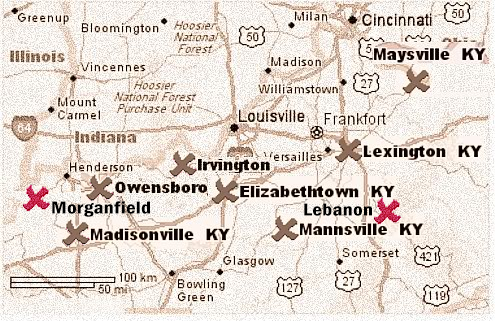
Above: The variously reported sighting locations with the addition of Morganfield and Lebanon, Kentucky.
Admittedly, who got what wrong is a matter of guesswork. But later 'standardized' versions of the story would often reflect only what Ruppelt wrote:
At one-fifteen on that afternoon the control tower operators at Godman AFB, outside Louisville, Kentucky, received a telephone call from the Kentucky State Highway Patrol. The patrol wanted to know if Godman Tower knew anything about any unusual aircraft in the vicinity. Several people from Maysville, Kentucky, a small town 80 miles east of Louisville, had reported seeing a strange aircraft.
But it would be not only from where the sightings took place, but how they were seen which affects how the story of that tragic day unfolds.

Above: The variously reported sighting locations in relation to Godman Field. Irvington is approximately 18 miles due west of Godman Field.
CAPTAIN RUPPELT'S VERSION of the story continues this way...
Godman knew that they had nothing in the vicinity so they called Flight Service at Wright-Patterson AFB. In a few minutes Flight Service called back. Their air Traffic control board showed no flights in the area. About twenty minutes later the state police called again. This time people from the towns of Owensboro and Irvington, Kentucky, west of Louisville, were reporting a strange craft. The report from these two towns was a little more complete. The townspeople had described the object to the state police as being "circular, about 250 to 300 feet in diameter," and moving westward at a "pretty good clip." Godman Tower checked Flight Service again. Nothing. All this time the tower operators had been looking for the reported object. They theorized that since the UFO had had to pass north of Godman to get from Maysville to Owensboro it might come back.
But again, Ruppelt's version veers from the official statements of the participants.
A minor difference: in no official statement does anyone say anything remotely similar to thinking "that since the UFO had had to pass north of Godman to get from Maysville to Owensboro it might come back". First, as shown above, it's unlikely that Maysville was even involved. But even if it were, it's unlikely to expect something flying across hundreds of miles on a straight path to 'come back'.
The bigger difference: as noted above, the report of the object over Irvington and Owensboro came from "Flight Service", not the Kentucky Highway Patrol. And where Ruppelt states that the reported size of '250 to 300 feet in diameter' didn't come until the later Owensboro/Irvington reports, T Sgt Blackwell in his statement above says...
I received a telephone call from Sgt Cook, Col Hix's office, stating that according to Ft Knox Military Police and "E" Town state police, a large curcular [sic] object from 250 to 300 ft in diameter over Mansville, Ky. ...
And further, T Sgt Blackwell says that...
Shortly afterward Flight Service gave Godman Tower positions on the object over Irvington, Ky. then Owensboro, Ky. of about the same size and description...
Meanwhile, Pfc Oliver's statement above backs up T Sgt Blackwell's version...
I, Pfc Stanley Oliver, was on duty in the Control Tower at Godman Field on the afternoon of 7 January 1948. When first heard of the object in the sky about 1320 CST, we received a phone call from Colonel Hix's office that a large object was sighted at Mansville, Kentucky, the supposed object was supposed to be about 250 feet to 300 feet in diameter at 1330 CST or more.
So, according to the official statements of the participants, the very large size of the object was consistent from the beginning.
Here the size of the reported object matters, not just for identifying what was being seen, but because size affects issues of the visibility of objects in the sky seen from a distance.
Unfortunately, as in the confusion about the location of the sightings, the original source(s) for this reported size is also unknown.
Again, only one person's actual identity -- Sgt. John Worful of the State Highway Patrol -- shows up in any government or news report. And he states...
"It was reported to look like an ice-cream cone with a little fire at the bottom. It appeared to be about 45 feet across the top and 100 feet long through a small telescope."
Again, who got what wrong is a matter of guess work. However, issues of size and visibility would further confuse attempts to ferret out the truth about the events of that day.
But more on that, later.
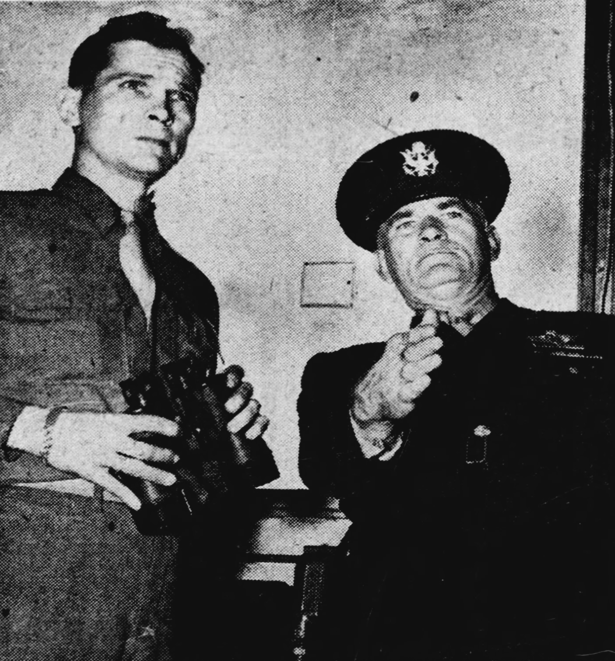
Above: A news story in the Louisville, Kentucky, Courier-Journal two days afterwards included a picture of T Sgt Blackwell and Col. Hix.
WHAT HAPPENED NEXT is not in dispute.
T Sgt Blackwell and Pfc Oliver kept a lookout from the tower, trying to see the object. Somewhere between 1:45 and 1:50 pm something was spotted.
From the official statement by T Sgt Blackwell...
About 1345 or 1350 I sighted an object in the sky to the South of Godman Field. As I wanted verification, I called my Detachment Commander, 1st Lt Orner, to the Tower. After he had sighted the object, he called for the Operations Officer, Capt Carter, over the teletalk box from the Traffic Desk. He came up stairs immediately, and looked at the object through field glasses in the Tower. He then called for the CO, Col Hix. He came to the tower about 1420 (appx) and sighted the object immediately.
Pfc Oliver tells essentially the same story, but adds what he saw...
Sgt Blackwell sighted an object to the southwest of Godman Field and he asked me if I saw it. I saw the object but thought I was imagining I saw it and Sgt Blackwell told me to look again. This time I was really sure I saw an object and then we called Lt Orner, who came to the Control Tower and he too saw the object. Lt Orner then called Captain Carter who, after coming to the Control Tower, also saw this object. Captain Carter called Colonel Hix who came to the Control Tower and he too saw the object. We all then attempted to figure out just what it could be and to me it had the resemblance of an ice cream cone topped with red.
Lt. Orner tells of what he saw after he was called by T Sgt Blackwell...
I was returning to the Control Tower to see the object sighted by them. I immediately went to the Control Tower and saw a small white object in the southwest sky. This object appeared stationary. I was unable to tell if it was an object radiating its own light or giving off reflected light. Through binoculars it partially appeared as a parachute does with bright sun shining on the top of the silk but there also seemed to be some red light around the lower of it.
Captain Cary Carter, who was called to the tower by Lt. Orner, describes his observations...
At approximately 1400 hours and 7 minutes, 7 Jan 48 I received a call from Lt. Orner, AACS Detachment Commander, that the Tower had spotted an unidentified object and requested that I take a look. Lt. Orner pointed out the object to the southwest, which was easily discernible with the naked eye. The object appeared round and white (whiter than the clouds that passed in front of it) and could be seen through cirus [sic] clouds. After looking through field glasses for approximately 3 or 4 minutes I called Co. [sic] Hix's office, advising that office of the object's presence. Lt. Col Wood and Capt. Duesler came to the tower immediately. Col. Hix followed them.
In another official statement, Captain James Duesler briefly describes what he saw...
At approximately 1420, 7 Jan 48, I accompanied Lt. Col. E.G. Wood to the Godman Field Control Tower to observe "an object hanging high in the sky south of Godman".
Shortly after reaching the tower, Col Guy F. Hix, the Commanding Officer, was summoned; it was at that time that I first sighted the bright silver object.
Lt. Col. Wood gives a more detailed description...
The object, as it appeared to the undersigned was circular in shape and, if it was a great distance away, was 1/10th the size of a full moon. If it was an earthly object, the size, as compared to the diminishing size of the P-51's flying toward it, seemed to be at least several hundred feet in diameter.
And Col. Hix, commanding officer at Godman, reported the following...
At 1445 hrs. the Tower notified me that an object had been sighted at about 215°. I went to the Tower and observed the object until 1550 hrs., when it disappeared behind the clouds.
The object observed could be plainly seen with the naked eye, and appeared to be about one-quarter the size of a full moon, white in color. Through eight-power binoculars, the object seemed to have a red border at the bottom, at times, and a red border at the top at times. It remained stationary for 1½ hours.
The above statements are the first official descriptions of the object.
Accounts of the timing given in the statements differ by as much as half an hour. But taken as an aggregate, the approximate timing is discernible. This, then, was the state of things so far:
Somewhere between 13:15 and 13:20 (1:15 and 1:20 pm) the call came to T Sgt Blackwell in the control tower to be on the lookout for the object. Approximately 20 to 30 minutes later, between 13:45 and 13:55 (1:45 and 1:50 pm) Blackwell spotted an unidentified object in the sky.
Blackwell pointed it out to Pfc Oliver, and then called Col. Orner to come to the tower. Some minutes later Col. Orner arrived, saw the object, and somewhere around 14:07 called Captain Carter, who "came up stairs immediately".
Captain Carter, using field glasses, also saw the object, and called Col. Hix, the commanding officer. But it was Captain Duesler and Lt. Wood who arrived from Col Hix's office soon after. They apparently were sent to check it out on his behalf, for after they sighted the object, Captain Duesler says "Col Guy F. Hix, the Commanding Officer, was summoned".
Col. Hix arrived at the tower sometime soon after 14:20 (2:20 pm, according to Blackwell's statement).
And everyone's eyes were turned to 215 degrees southwest.

Above: The line of sight from Godman Tower to the object. The object was described as being located at 215 degrees. The black triangle defines the area between 210 and 220 degrees. None of the declassified statements included the estimated altitude or distance of the object.
What happened in the next few minutes, as the seven men (Blackwell, Oliver, Orner, Wood, Carter, Duesler, and Hix) watched the object, is unknown. Any conversations, exclamations or suppositions amongst them are nowhere to be found in the official statements they later gave.
What is known is that just after that intervening period, Captain Thomas F. Mantell entered the story.
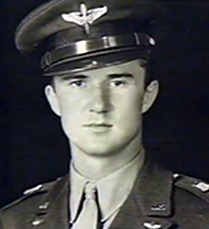 Left: Air Force portrait photo of Captain Mantell. Left: Air Force portrait photo of Captain Mantell.
NO ONE CAN KNOW what Captain Mantell may have been thinking on that fateful afternoon as he led a flight of four planes from Georgia towards Kentucky.
It had been one day since he had last seen his wife Peggy and his two boys, six year old Thomas F. Mantell III and 18-month old Terry Lee.
Nine days earlier, on December 30th, four P-51s of the Kentucky National Guard had been grounded due to weather. The planes had landed at Marietta Army Air Base in Georgia, where they remained. Days later, when the weather finally cleared, Captain Mantell volunteered to lead a ferry flight of the grounded P-51s back to Standiford Field at Louisville.
And so on the previous day, January 6th, he and the three other pilots -- along with mechanics who would 'preflight' the grounded planes -- left Louisville on a C-47 Douglas Skytrain.
Captain Mantell would never see his wife or children again.
The flight to Georgia on the C-47, at a cruising speed of 160 mph, must have seemed almost unbearably slow to Captain Mantell, compared to the 360 mph cruising speed of the P-51 Mustang, which was his forte. His best friend would say later, "His interest in flying could not be excelled. He loved the P-51, felt he was the master of it".
But perhaps -- just perhaps -- the lumbering flight put him in mind of an earlier time...
Born in Franklin, Kentucky on June 30, 1922, Mantell had joined the Army Air Corps on June 16, 1942 -- just after graduating Louisville Male High School and just short of his 20th birthday. According to an interview given by his sister in an episode of the Sightings television program, it was the fulfillment of a lifetime dream...
Tommy was my big brother. He was three years older than I and... sort of awesome to me, of course. I remember Tommy mostly interested in airplanes. He made model airplanes, and he had 'em hanging all over his bed.
Also interviewed by Sightings, Mantel's wife recalled...
He was a fun guy, but a serious guy. His mind was always up in the air. Flying was his first love, and when he got into the Air Corps in World War Two, he was thrilled to death. I wasn't too thrilled, but if he was happy, I was happy.
On the day of his 21st birthday, June 30, 1943, Mantell proudly graduated Army Air Corps Flight School. But although he had hoped to be a fighter pilot, his 6'2" frame prohibited this, and he was assigned to paratroop carrier duties, first in North Africa and then in England.
Less than one year after graduating, as one of the first fliers over the coast on D-Day, Mantell was tasked with piloting a cargo plane towing a glider, which was to be released behind enemy lines as part of the first strike force of the Allied invasion of "Fortress Europe".
Mantell's plane, which the crew had darkly named Vulture's Delight, suffered severe damage from enemy anti-aircraft batteries. Much of the rudder and elevator controls were shot out, and the tail section was set on fire while still 100 miles from the target.
But instead of turning back, Mantell determinedly proceeded on to the target as his crew fought the fire. Successfully releasing the glider on target, Mantell then piloted the severely damaged aircraft back to England -- successfully landing the nearly-unflyable plane with no fatalities...
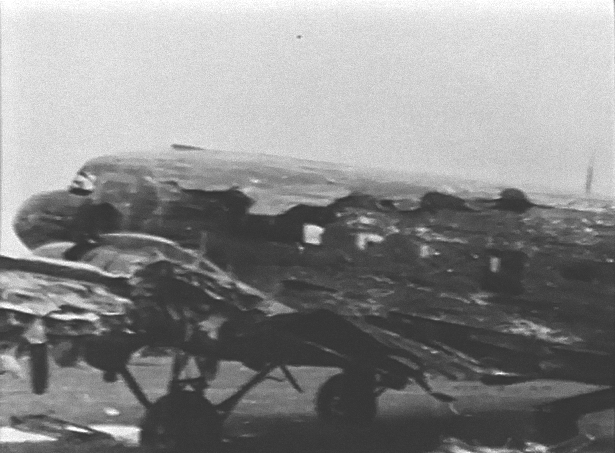
Above: Mantell's plane upon return to England from his D-Day mission.
As a result, Mantell would earn the 'Distinguished Flying Cross' for heroism and exceptional achievement in aerial flight.
He was just twenty-two years old at the time.
Later he would pilot missions during "Operation Marketgarden" in Holland and during "Operation Plunder" over the Rhine river in Germany.
Following the war, he was assigned to Bergstrom field in Texas, where he became a pilot-instructor for Chinese cadets under a highly-classified training program. Just after the end of the program, Mantell was discharged on November 20, 1946.
He returned to Louisville, which meant not only home, but family. His father, mother and two sisters all lived there. And of course his wife Peggy, and Thomas F. Mantell III -- who had been less than one year old when Captain Mantell joined the service, and who was four years old upon his return. The next year Terry Lee would be born. Peggy Mantell would comment...
When he got out of the Army, I was hoping he'd get a regular nine-to-five job. But he still wanted airplanes. So he started his own flying school.
Formed with a partner, the Elkins-Mantell Flying School, operated out of Bowman Field in Louisville. Then in February, 1947 Mantell joined the newly organized Kentucky Air National Guard, and trained on the P-51 Mustang.
Now, eleven months later, he was on his way to Marietta Army Air Base in Georgia by way of the lumbering C-47. The next day, he would pilot his way back to Louisville from Georgia, leading three others who -- like Captain Mantell -- had volunteered for the mission.
And on schedule, at 1:35 p.m. the next day, the four men departed in their four planes for Standiford Field -- and home.
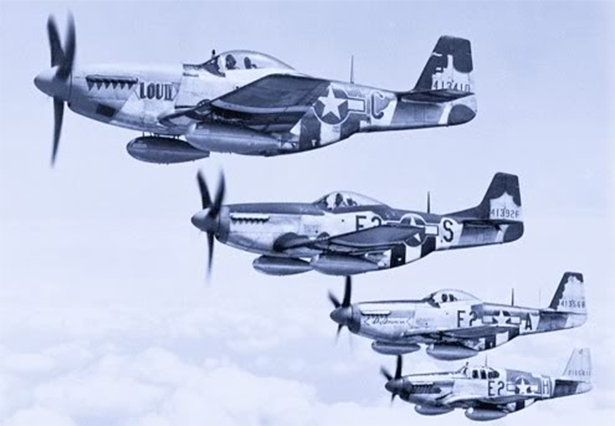
 Above: A squadron of 4 P-51 Mustangs. Left: Captain Mantell was on a ferry flight from Marietta, Georgia to his home base of Standiford Field in Kentucky. Above: A squadron of 4 P-51 Mustangs. Left: Captain Mantell was on a ferry flight from Marietta, Georgia to his home base of Standiford Field in Kentucky.
AT APPROXIMATELY 14:45 (2:45 pm), fate brought together the seven men at Godman Tower and the four men piloting the P-51s.
The flight was formed into the 'four fingered' position. Leading the flight was Captain Mantell. Flying slightly behind, and to Captain Mantel's left, was his wingman, Lt. Robert Hendricks. Flying slightly behind, and to Captain Mantel's right was the 'Element Leader', Lt. Albert Clements. Flying slightly behind Lt. Clements, and to his right, was his wingman, Lt. Buford Hammond.
Lt. Orner's statement gives the events in the tower...
Several minutes after the object was sighted a flight of four (4) P-51's came over the field from the south. I instructed T Sgt Blackwell to call flight leader and ask if they had seen any evidence of this object. The flight leader answered negative and I suggested to the Operations Officer that we ask them if they had enough gas to go look for this object.
But memories can differ, and T Sgt Blackwell's statement says nothing about asking if the four planes had seen the object, stating only...
About 1430 to 1440 a flight of four P-51's approached Goldman Field from the South, enroute from Marietta, Ga. to Standiford Field, Ky. As they passed over the tower I called them on "B" channel, VHF and asked the flight leader, NG 869, if he had enough gas and if so, would he mind trying to identify an object in the sky to the South of Godman Field. He replied in the affirmative and made a right turn around with two planes and proceeded South from Godman Field.
Later, in another statement, T Sgt Blackwell gave a more detailed version of the conversation...
At approximately 1430 hours we sighted a 4-ship formation of P-51's approaching Godman from the southeast heading towards Louisville. As they crossed over Godman Field, I attempted to contact the flight of ships in the following manner:
"Godman Tower Calling the flight of 4 ships northbound over Godman Field. Do you read? Over"
I gave that call twice and finally after the second call-up the Flight Leader of the formation acknowledged "Roger Godman Tower. This is National Guard 869, Flight Leader of the formation. Over?"
"National Guard 869 from Godman Tower. We have an object out south of Godman that we are unable to identify, and we would like to know if you have gas enough; and if so could you take a look for us if you will."
The Flight Leader acknowledged, "Roger, I have the gas and I will take a look for you if you give me the correct heading and any information you have on locating the object".
Something about this message must have excited Captain Mantell -- for his subsequent actions left the crew he was leading in confusion. Perhaps it was what he had heard after asking for 'any information you have on locating the object', but that is pure speculation.
In any case, his subsequent actions left the other pilots in his flight scrambling. Captain Mantell had switched his radio from 'C' channel (used for in-flight communications amongst the group he led) to 'B' channel, used by pilots to contact control towers, as the group was nearing their home base of Standiford Field.
And it was in fact this switch to 'B' channel that made the group at Godman Tower aware of his presence, as he radioed Standiford Field in nearby Louisville.
Perhaps forgetting that he had made the switch, Captain Mantell did not check to make sure the others in his squadron had heard the conversation over channel 'B' with Godman, and in fact they were still tuned to channel 'C' and knew nothing about it.
Captain Mantell's wingman, Lt. Hendricks, in his official statement, tells what happened next...
I, Lt. Robert K Hendricks ,flying [sic] in the number two position was on channel C as we had been the entire trip,when [sic] I noticed Capt. Mantell was talking so I went over to channel B.
The only part of the conversation between Capt. Mantell and Godman Field that I heard was as follows, "we would like for you to take a look at it, come over the field on a heading of 330degrees [sic] and we will try to guide you." Capt.Mantell [sic] answered "Roger, I'll give you a call when I identify it".
Upon hearing this I requested permision [sic] to leave the flight to return to Sandiford Field,the [sic] request was granted by Capt. Mantell. I left the flight at approx. 1440C and landed at Standiford at 1501C.
Hendricks had had to leave because of low fuel.
The two remaining pilots -- who were still tuned to 'C' channel -- were left to wonder, and then follow in bewilderment, as Lt. Hendricks left the flight formation and Captain Mantell made the unexpected turn away from their destination.
Lt. Clements', the Element Leader, gives his version of what happened from that point...
Capt. Mantell immediately after this began a rather sharp spiraling climb to the right at rather high power settings, necessitating a power setting of 47" MP and 2700 RPM to maintain position in the formation with him. He continued spiraling at about 14,000' where he broke off the spiral and headed on a south-westerly heading of approximately 220°, still climbing at the maximum rate of 180 IAS. At about 16,000' I put on my oxygen mask and began taking oxygen because it became apparent that Capt. Mantell was heading for much higher altitudes even though it was known before hand that he did not have oxygen equipment and neither did the element wingman Lt. Hammond. The flight continued on this south-westerly course and at about 18,000' I attempted to pull up fairly close to the flight leader and try to signal him with hand motions and to contact him on B Baker channel asking where the flight was headed. Capt. Mantell had at no time signaled for a change over to B Baker channel which is always customary from the flight leader, either visual signal or on the radio.
In one of my transmissions I notified Capt. Mantell that we were considerably over our ETA for Standiford Field and suggested that he notify Godman Field to relay our position to Flight Service, to which he replied "Roger". However, I failed to hear Capt. Mantell contact Godman Field on this. In the next few minutes I heard Capt. Mantell say "Look, there's a town down there with an airport beside it", and from previous flying in this area I recognized it to be the town of Bowling Green with it's [sic] airport to the south east, and at this point I noted that we were at 20,000' and still climbing. I called Capt. Mantell and notified that this was Bowling Green and again asked him what were [sic] looking for.
He then replied "Look, there it is out there at 1200 o'clock", and I was able to discern a bright appearing object, very small, and so faraway [sic] as to be unable to identify it as to size, shape, color, but it was definitely something which could be seen. It's [sic] position was slightly lower and to the left of the sun. This was at approximately 1515. I called Capt. Mantell and told him I could see the object but suggested that since we did not seem to be making a gain on the object, that it would be better if we leveled off and tried to pick up some speed and possibly get under the object. His transmissions were garbled but he mentioned something about going to 25,000 feet for about 10 minutes and then if we were unable to make any further progress towards the object, we could drop down.
From the time that the high blower kicked in at about 18,000' on up even though I was using these maximum power settings [sic, entire sentence]. At about 22,500' realizing that it was too high to maintain without oxygen, I broke off the flight out of formation and Capt. Mantell dissapeared [sic], still climbing almost directly into the sun. I called him and informed him that we were breaking off the flight and returning to Sandiford Field, but he did not acknowledge. Through the later stages of this climb Lt. Hammond was signaling that he was having trouble because of his lack of oxygen and wished to go down to a lower doen [sic] altitude. From the time we broke off from the formation we began a rather sharp descent back on course to Standiford Field, about 40° and finally established contact with Godman Tower giving them a position report and our destination, and asking them if they would try to contact Capt. Mantell and inform him that we were returning, in as much as he failed to acknowledge our previous message.
Two days later, quoted in the Louisville, Kentucky, Courier-Journal, Hammond and Clements would give more-personal descriptions of what had happened in the air...
Clements said Mantell informed him they were to look for something "but didn't seem to know exactly what it was." Soon, Clements related, Mantell shouted through the loud speaker, "Look, there it is at 12 o'clock." Clements said this meant it was "right over our nose."
Clements gazed straight ahead and saw a "bright shining object that looked like a star." He and Mantell started after it.
Hammond, who had received no word of the flying saucer, was bewildered.
"At first I thought we were lost," he said. "Then we started climbing and I assumed we were looking for Louisville." Hammond was depending on Mantell and Clements for navigation and went on up with them to avoid losing his bearings.
"I felt a little shaky at 15,000 feet," he declared, "because I realized we were supposed to take oxygen at 12,000."
"By the time I hit 22,000 I was seeing double. I pulled alongside Clements and indicated with gestures that I didn't have an oxygen mask. In fact I circled my finger around my head to show him I was getting woozy. He understood the situation and we turned back."
T Sgt Blackwell's statement gives the details of Captain Mantell's flight, as heard from the tower...
The three ship formation proceeded South on a heading of 210°, climbing steadily. About 1445 the flight leader, NG 869, reported seeing the object "ahead and above, I'm still climbing". To which a wing man retorted, "What the Hell are we looking for"? The leader reported at 15,000 ft that "The object is directly ahead of and above me now, moving about half my speed". When asked for a discription [sic] he replied "It appears metallic object of tremendous size". At 15,000 ft, the flight leader reported, "I'm still climbing, the object is above and ahead of me moving at about my speed or faster. I'M [sic] trying to close in for a better look [sic, no end quote]. This last contact was at about 1515.
This, then, is how the events were reported by those in the tower and by Lt. Hendricks...
Somewhere around 2:20 pm Col Hix had arrived to join the others, the last of the 7 men who would witness the object from the tower. Minutes later Captain Mantell's squadron neared Godman, and were contacted.
Captain Mantell agreed to go look, but neglected to tell the others flying with him that there had been a change in their mission. Lt. Hendricks figured out that Mantell was now on 'B' channel, and contacted him, receiving permission to leave the flight and return to Standiford Field, owing to a lack of fuel.
Immediately afterwards, Captain Mantell changed course and began a rapid climb. Lt. Clements and Lt. Hammond turned and climbed with him, though they did not know why the flight had changed, or why Lt. Hendricks had left the flight.
The climbing rate was dramatic. Starting from their cruising altitude of 5,000 feet they climbed to 16,000 feet at maximum climbing speed.
Lt. Clements put on his oxygen mask at this time. But neither Mantell nor Lt. Hammond had oxygen equipment. There had been no radio communication between the pilots, owing to their being on different channels.
And still they climbed.
At 18,000 feet Lt. Clements caught up with Captain Mantell and signaled him by hand. They then communicated for the first time over 'B' channel.
But then, although they were in communication, Captain Mantell's plane pulled away from the others, even though the others were also flying at maximum speed.
At 20,00 feet they were over Bowling Green. Mantell spotted the object and gave its location to Lt. Clements, who finally saw something as well. But they didn't appear to be gaining on the object, so Lt. Clements suggested they stop the climb and level out, so as to increase their air speed.
Captain Mantell's reply was garbled, and he continued to climb. He seemed to Lt. Clements to be saying that he would go to 25,000 feet and then break off if they were no closer. By this time he was far ahead of Clements and Hammond.
At 22,500 feet, Lt. Clements and Lt. Hammond broke off from the formation. Lt. Hammond had no oxygen and needed to fly down to a lower altitude. Captain Mantell was out of their sight in a matter of moments.
But back at the tower, according to the official statements, things were heard slightly differently. According to their statements, elevations reported were different. For instance, they stated that Lt. Clements suggestion to level out came at 15,000 feet, not 20,000. They also reported that Mantell said he would climb to 20,000 feet and then break off, not the 25,000 feet reported by Lt. Clements. And Lt. Orner says the other planes lost sight of Mantell before they broke off formation.
But most important is what Lt. Clements did not hear Mantell say, or did not remember, or chose not to report... three statements clearly heard by those in the tower:
"The object is directly ahead of and above me now, moving about half my speed."
"It appears metallic object of tremendous size."
"I'm still climbing, the object is above and ahead of me moving at about my speed or faster, I'm trying to close in for a better look. "
It had now been close to a half-hour since Captain Mantell began his chase. Back in the control tower they had lost sight of the squadron some minutes before (although they still had the object in sight), and were relying on the radio transmissions for information. But Lt. Clements and Lt. Hammond had just broken off formation and there were no more radio communications to be heard.
And so now there was only silence, and the unknown.
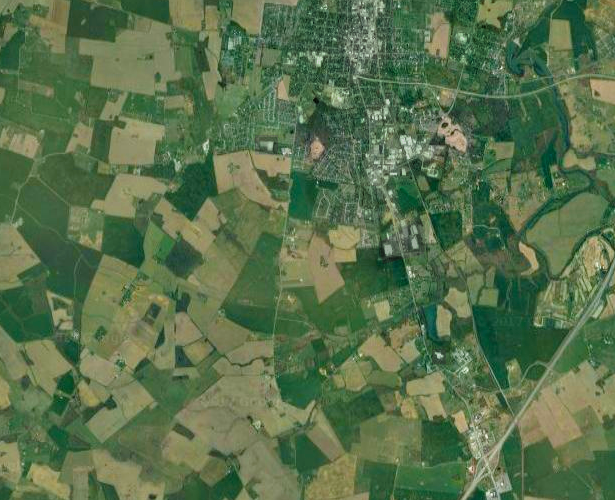
Above: Aerial view of the area above Franklin, Kentucky. The Joe Phillips farm was located approximately in the center of the image.
TWENTY-THOUSAND FEET or more below Mantell's plane, Glenn Mayes was outside, when...
...at approximately three-fifteen P.M. I heard an airplane overhead making a funny noise as if he were diving down, and pulling up, but it wasn't, it was just circling. After about three circles, the airplane started into a power dive slowly rotating. The plane was so high I could hardly see it when it started down. It started to make a terrific noise, ever increasing, as it descended. It exploded half way between where it started the dive and the ground. No fire was seen. It hit or crashed at three-twenty P.M. Central. It didn't explode when it hit the ground and did not burn.
His description taken as an affidavit, an identically-worded affidavit was also taken from William Mayes, indicating the two had been together when Mantell's plane began "making a funny noise" overhead. And, in fact, it appears the two were related and of an unknown age, as found in an "informal and fragmentary" preliminary report by Captain Richard R. Tyler of the Kentucky Air National Guard -- the first Air Force investigator on the scene...
At the scene of the accident we carried on as much of an investigation that was possible at night. We got affidavits from Mrs. Phillips, Mr. Becker, the County Coroner, and two boys who watched the plane come down.
Shedding further light, a 1996 episode of the Sightings television program identified Mayes as having been waiting for a school bus that day (but this being at a time when school was letting out, Mayes would likely have been waiting for a bus to drop someone off). And although Captain Tyler identified them as "two boys", the wording of their affidavits as well as the apparent age of Glenn Mayes in the Sightings program indicate that at least one of them (Glenn) was of late high-school age or older.
In another affidavit taken that day, one Mrs. Phillips -- on whose farm Mantell's plane would crash -- said she...
...was sitting in my front room when I heard one explosion, ran to my front window and saw an airplane crash into my left front yard, about two-hundred and fifty yards from my home. The airplane did not burn and did not explode after it hit the ground.
Mrs. Phillips' story would offer other details in newspaper accounts the next day, as from the Louisville, Kentucky, Courier-Journal...
Mrs. Joe Phillips, on whose farm the plane crashed, said the craft seemed to be having engine trouble as it passed over her house.
Seconds later Mrs. Phillips heard an explosion. She rushed to a window in time to see the plane disintegrating at tree-top height.
And from the Middlesboro, Kentucky Daily News...
Mrs. Joe Phillips, on whose farm the plane crashed, said she heard it roar low over her house and went to a window in time to see it fall apart in the air, at about tree-top height. It struck the ground about 300 yards from the house.
But the most complete account would appear in the Franklin, Kentucky, Favorite...
Mrs. Joe Phillips said she was sitting by her fire when she heard the plane, with the engine apparently in trouble, flying over her house. Almost immediately there was a large explosion. Startled, she glanced out the window and saw the disintegrating plane hit the ground in a woods-lot about 200 yards away from her house.
Pieces of wreckage were seen a quarter of a mile from the point of the crash. Several people in Franklin reported they heard the explosion.
A vapor trail still floated in the sky an hour after the crash.
Another eyewitness, Barbara Mayes, a student in the Franklin Grade School said she saw the plane explode while high in mid-air. She was waiting at the Lake Springs School for her bus to take her home when she witnessed the explosion...
Mrs. Joe Phillips said she called the telephone operator and asked that an ambulance and aid be called to the scene.
And there, on the William J. Phillips farm near Franklin, Kentucky, Captain Mantell came to rest, his journey over not just this time, but forever... only a few short miles distant from the spot where he had been born.

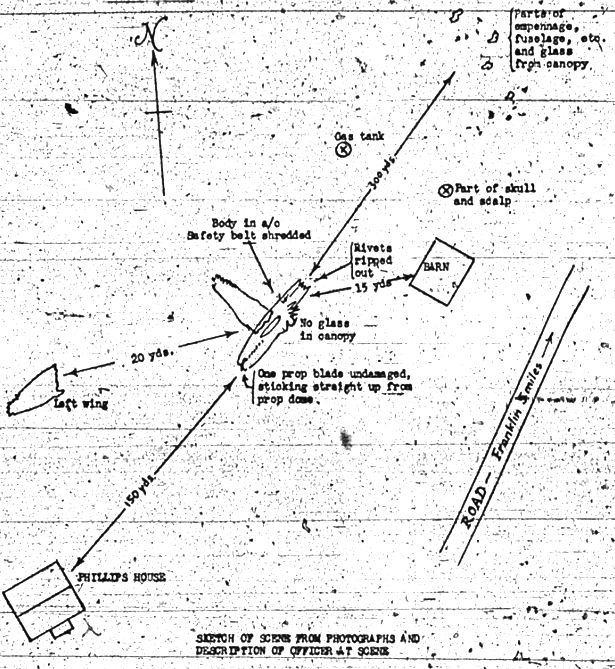
Above, top: Section of the wreckage of Captain Mantell's P-51, from Project Blue Book files. Below: Sketch of wreckage from official Air Force accident report.
IT IS A DANGER SHARED by mountain climbers and airplane pilots. As the altitude increases the air pressure decreases, and the flow of oxygen through the body diminishes. First the oxygen-starved brain loses judgment, memory, alertness, and coordination. Next comes loss of consciousness, or even death.
The speed of the onset depends on the altitude. It is calculated as the time of useful consciousness (TUC). At 18,000 feet the TUC is 25 to 30 minutes. At 22,000 feet, 10 minutes. At 25,000 feet, 3 to 5 minutes. And at 30,000 feet, less than 2 minutes.
The Air Force accident report would conclude...
Consensus is that Captain Mantell lost consciousness at approximately 26,000 feet, the P-51 being trimmed for maximum climb continued to climb gradually leveling out as increasing altitude caused decrease in power. The aircraft began to fly in reasonably level attitude at about 30,000 feet. It then began a gradual turn to the left because of torque, slowly increasing degree of bank as nose depressed, finally began a spiralling dive which resulted in excessive speeds causing gradual disintegration of aircraft which probably began between 10000 and 20000 feet.
Since canopy lock was in place after the crash, it is assumed that Captain Mantell made no attempt to abandon the aircraft, and was unconscious at moment of crash or had died from lack of oxygen before the aircraft began the spiralling dive from about 30000 feet.
Parts of the aircraft were found as far as six-tenths (estimated) of a mile from central wreckage. The parts were scattered from North to South. The aircraft came straight down in a horizontal position and landed on the left side. The left wing came off while in the air and landed 100 feet from the central wreckage. The aircraft did not slide forward after contact with the ground. Throttle was set at one-fourth open, mixture control in "Idle-Cut-Off", and prop control in :"Full Increase RPM".
The time of death was stated by the coroner to be 3:18 pm, the time at which Captain Mantell's shattered watch had stopped.
And there Captain Mantell's part in the story would end.
Still, it would by no means be the last event of that fateful day -- for in the hours following there would be more sightings, as well as the bare beginnings of an investigation which would multiply on itself and stretch out even to today, seven decades later.
But even amongst all that, one aspect of the story of Captain Mantell -- rarely acknowledged or remembered -- takes precedence above all others.
For back at home in Louisville, Peggy Mantell remained unaware of the tragedy which had unfolded, or that she and her children had seen her husband -- no doubt vibrant, and full of life -- for a final time on the day before. She would later tell how the grim news came her way...
Two neighbors from down the street came in. And they said, "Peggy, we've got something we've got to tell you." And of course I had no idea what it was. And they told me.
They said, "Tommy's had a crash." And I said, "Oh, is he all right?" And they said, "No, he was killed."
But it is in the quiet reflection of Mantell's sister Bettye -- quoting her mother -- that the ultimate importance of the loss of the 25-year old war hero is found...
The main thing I recall is standing in my brother's home with his wife, and we were all standing in a circle, holding hands. And my mother said...
"The circle is broken."
Notes:
The following are the complete witness statements on the events concerning Captain Mantell as found in the declassified files of Project Blue Book...
1. Statement of T Sgt Quinton A. Blackwell...
UNITED STATES AIR FORCES
AIRWAYS AND AIR COMMUNICATIONS SERVICE, ATC
DETACHMENT 733-5 AF BASE UNIT (103D AACS SQ)
Godman Field, Fort Knox, Ky.
9 January 1948
STATEMENT OF T SGT QUINTON A BLACKWELL
I, T Sgt Quinton A Blackwell, AF18162475, was on duty as chief operator in the Control Tower at Godman Field, Ky. on the afternoon of 7 January 1948. Up until 1315 or 1320 matters were routine. At approximately that time I received a telephone call from Sgt Cook, Col Hix's office, stating that according to Ft Knox Military Police and "E" Town state police, a large curcular [sic] object from 250 to 300 ft in diameter over Mansville, Ky. and requested I check with Army Flight Service to see if any unusual type aircraft was in that vicinity. Flight Service advised negative on the aircraft and took the other info, requesting out [sic] CO verify the story. Shortly afterward Flight Service gave Godman Tower positions on the object over Irvington, Ky. then Owensboro, Ky. of about the same size and description. About 1345 or 1350 I sighted an object in the sky to the South of Godman Field. As I wanted verification, I called my Detachment Commander, 1st Lt Orner, to the Tower. After he had sighted the object, he called for the Operations Officer, Capt Carter, over the teletalk box from the Traffic Desk. He came up stairs immediately, and looked at the object through field glasses in the Tower. He then called for the CO, Col Hix. He came to the tower about 1420 (appx) and sighted the object immediately. About 1430 to 1440 a flight of four P-51's approached Goldman Field from the South, enroute from Marietta, Ga. to Standiford Field, Ky. As they passed over the tower I called them on "B" channel, VHF and asked the flight leader, NG 869, if he had enough gas and if so, would he mind trying to identify an object in the sky to the South of Godman Field. He replied in the affirmative and made a right turn around with two planes and proceeded South from Godman Field. The fourth plane proceeded on to Standiford Field alone. The three ship formation proceeded South on a heading of 210°, climbing steadily. About 1445 the flight leader, NG 869, reported seeing the object "ahead and above, I'm still climbing". To which a wing man retorted, "What the Hell are we looking for"? The leader reported at 15,000 ft that "The object is directly ahead of and above me now, moving about half my speed". When asked for a discription [sic] he replied "It appears metallic object of tremendous size". At 15,000 ft, the flight leader reported, "I'm still climbing, the object is above and ahead of me moving at about my speed or faster. I'M [sic] trying to close in for a better look [sic, no end quote]. This last contact was at about 1515. About 5 min. afterward, the other two ships in the flight turned back. As they passed over Godman NG 800 reported "It appears like the reflection of sunlight on an airplane canopy". Shortly afterward, the same pilot and plane took off from Standiford and resumed the search. He went to 33,000 feet one hundred miles South and did not sight anything. I left the Control Tower shortly afterward.
/s/ Quinton A. Blackwell
QUINTON A. BLACKWELL
T Sgt AF18162475
Det 733D AFBU
2. Statement of PFC Stanley Oliver...
UNITED STATES AIR FORCE
AIRWAYS AND AIR COMMUNICATIONS SERVICE, ATC
DETACHMENT 733-5 AF BASE UNIT (103D AACS SQ)
Godman Field, Fort Knox, Ky.
9 January 1948
STATEMENT OF PFC STANLEY OLIVER
I, Pfc Stanley Oliver, was on duty in the Control Tower at Godman Field on the afternoon of 7 January 1948. When first heard of the object in the sky about 1320 CST, we received a phone call from Colonel Hix's office that a large object was sighted at Mansville, Kentucky, the supposed object was supposed to be about 250 feet to 300 feet in diameter at 1330 CST or more.
Sgt Blackwell sighted an object to the southwest of Godman Field and he asked me if I saw it. I saw the object but thought I was imagining I saw it and Sgt Blackwell told me to look again. This time I was really sure I saw an object and then we called Lt Orner, who came to the Control Tower and he too saw the object. Lt Orner then called Captain Carter who, after coming to the Control Tower, also saw this object. Captain Carter called Colonel Hix who came to the Control Tower and he too saw the object. We all then attempted to figure out just what it could be and to me it had the resemblance of an ice cream cone topped with red.
At or about 1445 CST we sighted five (5) P-51 aircraft coming on from the southwest and as they came over the Control Tower someone suggested contacting the aircraft. Sgt Blackwell contacted them on "B" channel (VHF) and aircraft acknowledged his call. Someone suggested they try to overtake the object and we requested the planes to try and the flight leader stated he would. The call sign of this ship was NG869. They turned around and started toward the southwest again. One pilot in the formation told the flight leader that he would like to continue on to Louisville with the flight leader giving his permission to do so. We kept in contact with the flight leader for about twenty-five (25) minutes. The last contact we had with the flight leader was when one of his wingmen called and said "what the hell are we looking for". Flight leader stated he had the object in sight and he was going up to see what it was. He said at present he was at 15,000 feet and was still climbing. Those were the last words I believe we heard from him. Other pilots in the formation tried to contact him but to no avail.
In about another ten or fifteen minutes another P-51 took off from Standiford Field to look for the object. He gave me a call and asked if we still had the object in sight. He was told that at present the object was behind a cloud formation but he said he would try and locate it and in the meantime he tried contacting his flight leader but was unable to do so. He then reported he was unable to see the object and was coming back in when he came over the Control Tower.
I received a call from Standiford Operations that the plane had crashed and the pilot was killed at Franklin, Kentucky. He then sighted the object again and to my belief the object was a great distance from Godman Field and it was so far I couldn't tell if it was moving or not.
Pfc Oliver's statement did not include a signature notation.
3. Statement of Lt Paul I. Orner...
UNITED STATES AIR FORCE
AIRWAYS AND AIR COMMUNICATIONS SERVICE, ATC
DETACHMENT 733-5 AF BASE UNIT (103D AACS SQ)
Godman Field, Fort Knox, Ky
9 January 1948
STATEMENT OF LT PAUL I ORNER
Following is an account of the sighting of unknown objects from the Control Tower on 7 January 48 at Godman Field:
On the above date at approximately 1400 CST a report came in to the Control Tower through M Sgt Cook of a report of an unidentified object flying at terrific speed in the vicinity of Maysville. This call was cancelled minutes later by the Military Police at Fort Knox who had instructions from the Kentucky State Police.
Very soon thereafter several reports of the same nature came from Flight Service saying this object was over Irvington and Owensboro, Kentucky. At the same time an object was reported by T Sgt Blackwell, Chief Control Tower operator on duty. I was in the office of the Commanding Officer checking the call from the Fort Knox Military Police at this time. When the call was cancelled I was returning to the Control Tower to see the object sighted by them. I immediately went to the Control Tower and saw a small white object in the southwest sky. This object appeared stationary. I was unable to tell if it was an object radiating its own light or giving off reflected light. Through binoculars it partially appeared as a parachute does with bright sun shining on the top of the silk but there also seemed to be some red light around the lower of it.
The Commanding Officer, Operations Officer, S-2 and Executive Officer were called immediately. Several minutes after the object was sighted a flight of four (4) P-51's came over the field from the south. I instructed T Sgt Blackwell to call flight leader and ask if they had seen any evidence of this object. The flight leader answered negative and I suggested to the Operations Officer that we ask them if they had enough gas to go look for this object. The Tower operator was instructed to call the flight leader and he answered "yes" to this question. One (1) P-51 had permission from the flight leader to break formation and continue where he landed several minutes later on their original flight plan. The flight leader and two (2) other planes flew a course of 210° and in about five (5) minutes sighted the object. At first the flight leader reported it high and about one-half his speed at "12 o'clock". Shortly thereafter the flight leader reported it at about his speed and later said he was closing in to take a good look. This was the last message from NG869, the flight leader. NG800 shortly thereafter reported NG869 disappeared. From pilots reports in the formation NG869 was high and ahead of the wing man at about 1515 CST to 1530 CST when he disappeared. NG800 said he was breaking off with other wing man to return to Standiford Field due to lack of gas. This was about 1523 CST to 1530 CST. From messages transmitted by the formation it was estimated the flight leader was at 18 to 20 thousand feet and the wing man at approximately 15 thousand feet wide formation when the flight leader NG869 disappeared. NG800 and other wing man returned to Standiford Field.
NG800 gassed up and got more oxygen and flew a second mission on the same heading of 210° to a position of about 100 miles south of Godman Field to an altitude of 33 thousand feet and did not sight the object. At about 1645 CST when NG800 reported not seeing the object I left the Control Tower.
At about 1735 CST I returned to the Control Tower and a bright light different than a star at a position of about 240° azimuth and 8° elevation from the Control Tower. This was a round object. It seemed to have a dark spot in the center and the object moved north and disappeared from the horizon at a point 250° from the Tower. The unusual fact about this object was the fact that it remained visible and glowed through the haze near the Earth when no other stars were visible and did not disappear until it went below the level of the earth in a manner similar to the sun or moon setting. This object was viewed and tracked with the Weather Station theodolite from the hangar roof.
The final paragraph of Lt. Orner's statement refers to a sighting hours after the death of Captain Mantell, which will be covered in Part Three of this series. Lt. Orner's statement did not include a signature notation.
4. Statement of Captain Cary W. Carter...
HEADQUARTERS
315TH AF BASE UNIT (RES TNG)
GODMAN FIELD, FORT KNOX, KENTUCKY
9 January 1948
The undersigned was on duty at Godman Field 7 Jan 48 as Operations Officer.
At approximately 1400 hours and 7 minutes, 7 Jan 48 I received a call from Lt. Orner, AACS Detachment Commander, that the Tower had spotted an unidentified object and requested that I take a look. Lt. Orner pointed out the object to the southwest, which was easily discernible with the naked eye. The object appeared round and white (whiter than the clouds that passed in front of it) and could be seen through cirus [sic] clouds. After looking through field glasses for approximately 3 or 4 minutes I called Co. [sic] Hix's office, advising that office of the object's presence. Lt. Col Wood and Capt. Duesler came to the tower immediately. Col. Hix followed them.
About this time a flight of four P-51 aircraft were noticed approaching from the south. I asked Tec. Sgt. Blackwell, Tower Operator to contact the planes and see if they would take a look at the object for us. The planes were contacted and stated they had sufficient gas to take a look. One of the planes proceeded on to Standiford, the other planes were given a heading of 230°. One of the planes said he spotted the object at 1200 o'clock and was climbing toward it. One of the planes then said, "This ks [sic] 15,000 ft., let's level out". One of the planes, at this point (apparently the plane who saw the object) estimated its speed (the object's) at 180 M.P.H. A few seconds later he stated the object was going up and forward as fast as he was. He stated that he was going to 20,000 feet, and if no closer was going to abandon the chase. This was the last radio contact I heard. It was impossible to identify which plane was doing the talking in the above report. Later we heard that one plane had landed at Standiford to get fuel and oxygen to resume the search.
The undersigned reported to Flight Service a description, position of the object while theplanes [sic] searched for it.
/s/ Cary W. Carter
CARY W. CARTER
Captain, USAF
5. Statement of Lt. Colonel E. Garrison Wood, as part of his "Report of Observation of Unidentified Object in Skies Above Godman Field", dated 9 January 1948...
2. Standiford Tower, Standiford Field, Louisville, Ky., reported that two aircraft of an unspecified type were taking off from Standiford at approximately 1500 hrs and could be directed to proceed to Godman to assist in determining a definite status of the reported object. These aircraft did not appear. Another flight composed of four P-51's flew directly over Godman Tower at approximately 1500 hrs., at which time they were asked their identification. Upon being informed that they were National Guard aircraft from Standiford Field, and upon their replying in the affirmative that sufficient gas was available, they were asked if they would deviate from their course to assist in determining the nature of the object. Their ETA for the flight to Standiford was changed at that time.
3. The object, as it appeared to the undersigned was circular in shape and, if it was a great distance away, was 1/10th the size of a full moon. If it was an earthly object, the size, as compared to the diminishing size of the P-51's flying toward it, seemed to be at least several hundred feet in diameter.
E. GARRISON WOOD
Lt. Colonel USAF
Air Inspector
6. Statement of Captain James F. Duesler, Jr....
[ILLEGIBLE]
315TH AF BASE UNIT (RES TNG)
GODMAN FIELD, FORT KNOX, KENTUCKY
9 January 1948
At approximately 1420, 7 Jan 48, I accompanied Lt. Col. E.G. Wood to the Godman Field Control Tower to observe "an object hanging high in the sky south of Godman".
Shortly after reaching the tower, Col Guy F. Hix, the Commanding Officer, was summoned; it was at that time that I first sighted the bright silver object.
Approximately five minutes after Col. Hix came into the tower, a flight of four P-51's flew over Godman. An officer in the tower requested that the Tower Operator call this flight and ask the Flight Leader to investigate this object if he had sufficient fuel. The Flight Leader (Capt. Thomas F. Mantell) answered that he would, and requested a bearing to this object. At that time one member of the flight informed the leader that it was time for him to land and broke off from the formation. This A/C was heard requesting landing instructions from his home field, Standiford, in Louisville, [sic]
In the meantime the remaining three P-51's were climbing on the course given to them by Godman Tower towards this object that still appeared stationary. The Tower then advised the Flight Leader to correct his course 5 degrees to the lft [sic]; the Flight leader [sic, uncapitalized] acknowledged this correction and also reported his position at 7,500 feet and climbing. Immediately following the Flight Leader's transmission, another member of the Flight asked "Where in the hell are we going?" In a few minutes the Flight Leader called out an object "twelve o'clock high". Asked to describe this object, he said that it was bright and that it was climbing away from him. When asked about its speed, the Flight Leader stated it was going about half his speed, approximately 180 M.P.H.
Those of us in the Tower lost sight of the flight, but coulo [sic] still see this object. Shortly after the last transmission, the Flight Leader said he was at 15,000 ft, and still climbing after "it", but that he judged its speed to be the same as his. At that time a member of the flight called to the leader and requested that he "level off", but we heard no reply from the leader. That was the last message received from any member of the flight by Godman Tower.
/s/ James F. Duesler, Jr.
JAMES F. DUESLER, JR.
Captain, USAF
7. Statement of Col. Guy F. Hix...
HEADQUARTERS
315TH AF BASE UNIT (RES TNG)
GODMAN FIELD, FORT KNOX, KENTUCKY
9 January 1948
At approximately 1300 hrs. a call came to this Headquarters from State Police, reporting a flying object near Elizabethtown. Another report came in from Madisonville about ten minutes later. A third call came in from Lexington, Kentucky. (All towns are south of Godman Field).
We alerted the Tower to be on the lookout for flying objects. At 1445 hrs. the Tower notified me that an object had been sighted at about 215°. I went to the Tower and observed the object until 1550 hrs., when it disappeared behind the clouds.
The object observed could be plainly seen with the naked eye, and appeared to be about one-quarter the size of a full moon, white in color. Through eight-power binoculars, the object seemed to have a red border at the bottom, at times, and a red border at the top at times. It remained stationary for 1½ hours.
When I arrived in the Tower, Tech. Sgt. Quinton Blackwell had contacted there [sic] P-51 airplanes over the field and suggested that they have a look if they had sufficient fuel. When I arrived they were within sight of the Tower, heading on a course of 215°.
I heard one of the pilots report that he saw the object straight ahead and estimated the speed of 180 M.P.H. The pilot stated that the object was very large and very bright.
/s/ Guy F. Hix
GUY F. HIX
Colonel, USAF
Commanding
8. Statement of 1st Lt. Robert K. Hendricks (Undated)...
HEADQUARTERS, 123RD FIGHTER GROUP (ANG)
Standiford Field
P.O. Box 1167
Louisville, Kentucky
A fl ight [sic] of four P-51 departed Mareitta [sic] Georgia at 1342 C direct to Standiford field Louisville Kentucky. Capt.Thomas [sic] Mantell was in the lead ship as flight leader.
The flight was off course slightly to the left and therefore came over Godman Field on a course of about 45degrees [sic]. I, Lt. Robert K Hendricks ,flying [sic] in the number two position was on channel C as we had been the entire trip,when [sic] I noticed Capt. Mantell was talking so I went over to channel B.
The only part of the conversation between Capt. Mantell and Godman Field that I heard was as follows, "we would like for you to take a look at it, come over the field on a heading of 330degrees [sic] and we will try to guide you." Capt.Mantell [sic] answered "Roger, I'll give you a call when I identify it".
Upon hearing this I requested permision [sic] to leave the flight to return to Sandiford Field,the [sic] request was granted by Capt. Mantell. I left the flight at approx. 1440C and landed at Standiford at 1501C.
The above statements are true and correct to the best of myknowledge [sic, no end period]
[Handwritten signature]
ROBERT K. HENDRICKS
1st Lt. KY.N.G.
9. Statement of 1st Lt. Albert W. Clements (Not on letterhead)...
9 January 1948
Standiford Field
Louisville, Kentucky
The flight of four P-51s was begun from Marietta Army Airbase, Marietta, Georgia. Each pilot started his engine about 1335 CST, and immediately switched his radio to B Baker channel. Capt. Mantell, who was to lead the flight, contacted the tower and obtained take-off instructions and the flight taxied out, led by Capt. Mantell, Lt. Hendricks his wingman, as the element wingman. The first two ships were off the ground at about 1335, followed by the second two a minute later. Following the join-up in regular four ship formation, the flight proceeded on course towards Louisville, climbing up to 5000' and leveling off at this altitude. Capt. Mantell signaled for a channel switch to #3 C Charlie channel.
The flight proceeded without incident until over the Dale hollow Reservoir at which point Capt. Mantell signaled for intrail formation and proceeded to drop down and make two 360° orbits over the reservoir and then climbed back up to 5000' and proceeded on course again. The flight again proceeded without further incident to a point about five miles North of Godman Field, [sic, punctuation] Godman Field was slightly off course and the flight drifted off to the right making contact with the OhioRiver [sic] just north of Godman Field. At this point 1455 Lt. Hendricks, #2 man, broke away from the formation and headed towards Standiford Field. Capt. Mantell immediately after this began a rather sharp spiraling climb to the right at rather high power settings, necessitating a power setting of 47" MP and 2700 RPM to maintain position in the formation with him. He continued spiraling at about 14,000' where he broke off the spiral and headed on a south-westerly heading of approximately 220°, still climbing at the maximum rate of 180 IAS. At about 16,000' I put on my oxygen mask and began taking oxygen because it became apparent that Capt. Mantell was heading for much higher altitudes even though it was known before hand that he did not have oxygen equipment and neither did the element wingman Lt. Hammond. The flight continued on this south-westerly course and at about 18,000' I attempted to pull up fairly close to the flight leader and try to signal him with hand motions and to contact him on B Baker channel asking where the flight was headed. Capt. Mantell had at no time signaled for a change over to B Baker channel which is always customary from the flight leader, either visual signal or on the radio.
In one of my transmissions I notified Capt. Mantell that we were considerably over our ETA for Standiford Field and suggested that he notify Godman Field to relay our position to Flight Service, to which he replied "Roger". However, I failed to hear Capt. Mantell contact Godman Field on this. In the next few minutes I heard Capt. Mantell say "Look, there's a town down there with an airport beside it", and from previous flying in this area I recognized it to be the town of Bowling Green with it's [sic] airport to the south east, and at this point I noted that we were at 20,000' and still climbing. I called Capt. Mantell and notified that this was Bowling Green and again asked him what were [sic] looking for.
He then replied "Look, there it is out there at 1200 o'clock", and I was able to discern a bright appearing object, very small, and so faraway [sic] as to be unable to identify it as to size, shape, color, but it was definitely something which could be seen. It's [sic] position was slightly lower and to the left of the sun. This was at approximately 1515. I called Capt. Mantell and told him I could see the object but suggested that since we did not seem to be making a gain on the object, that it would be better if we leveled off and tried to pick up some speed and possibly get under the object. His transmissions were garbled but he mentioned something about going to 25,000 feet for about 10 minutes and then if we were unable to make any further progress towards the object, we could drop down.
From the time that the high blower kicked in at about 18,000' on up even though I was using these maximum power settings [sic, entire sentence]. At about 22,500' realizing that it was too high to maintain without oxygen, I broke off the flight out of formation and Capt. Mantell dissapeared [sic], still climbing almost directly into the sun. I called him and informed him that we were breaking off the flight and returning to Sandiford Field, but he did not acknowledge. Through the later stages of this climb Lt. Hammond was signaling that he was having trouble because of his lack of oxygen and wished to go down to a lower doen [sic] altitude. From the time we broke off from the formation we began a rather sharp descent back on course to Standiford Field, about 40° and finally established contact with Godman Tower giving them a position report and our destination, and asking them if they would try to contact Capt. Mantell and inform him that we were returning, in as much as he failed to acknowledge our previous message.
The last contact by radio which we had with Capt. Mantell was when he said he could see the object at 1200 o'clock which was from 20,000', and when last seen he seemed to have the airplane under perfect control and still climbing towards the object. I relayed my thoughts to Godman tower as to what we had seen and proceeded with Lt. Hammond on my wing to Standiford Field, landing without further incident at approximately 1540. As near as I can recall, the last time we saw Capt. Mantell was approximately 1520. At no time did I observe Capt. Mantell to be in trouble and not until the later stages of the flight, prior to our breaking off of formation, did I realize what the object of this high rate of climb and unusual heading away from out [sic] ultimate destination was. By the time that I switched to B Baker channel, after we started climbing, we were apparently out of range of the Godman Tower. I [sic] conjunction with the last time when we left Capt. Mantell I wou ld [sic] judge our position to be about 40 miles northwest of bowling Green.
/s/ Albert W. Clements
ALBERT W. CLEMENTS
1st Lt AC Ky ANG
There is no statement in the declassified files from Lt. Hammond, the third pilot in Mantell's flight.
10. Statement of Glenn T. Mayes...
AFFIDAVIT
January 7, 1948
Franklin, Kentucky
I, Glenn T. Mayes of Route #3, Simpson county, Lake Spring Road, Franklin, Kentucky, do state that on 7 January 1948 at approximately three-fifteen P.M. I heard an airplane overhead making a funny noise as if he were diving down, and pulling up, but it wasn't, it was just circling. After about three circles the airplane started into a power dive slowly rotating. This plane was so high I could hardly see it when it started down. It started to make a terrific noise, ever increasing, as it descended. It exploded half way between where it started the dive and the ground. No fire was seen. It hit or crashed at three-twenty P.M., Central. It didn't explode when it hit the ground and did not burn.
In witness whereof, I have hereunto set my hand and seal at my home on Route #3, Lake Spring Road, Franklin, Kentucky this 7th day of January 1948.
/s/ Glen T. Mayes
Route #3, Lake Spring Road
Franklin, Kentucky
The difference in spelling between "Glenn" in the first sentence and "Glen" in the signature is as it exists in the original. A nearly-identical affidavit by William C. Mayes is also found in the declassified files of Project Blue Book.
11. Statement of Mrs. C. Phillips...
AFFIDAVIT
7 January 1948
5 miles southwest of
Franklin, Kentucky on
W.J. Phillips' Farm
I, Mrs. Carey Phillips was sitting in my front room when I heard one explosion, ran to my front window and saw an airplane crash into my left front yard, about two-hundred and fifty yards from my home. The airplane did not burn and did not explode after it hit the ground.
It witness whereof, I have hereunto set my hand and seal at my home on Route #3, Lake Spring Road, Franklin, Kentucky this 7th day of January 1948.
/s/ Mrs. Carrie A. Phillips
The conflicting spellings of "Carey" in the first sentence and "Carrie" in the signature are as in the original declassified document.
12. Statement of T Sgt Quinton A. Blackwell, given January 15, 1948 as part of a follow-up investigation...
HEADQUARTERS
315TH AF BASE UNIT (RES TNG)
GODMAN FIELD, FORT KNOX, KENTUCKY
15 January 1948
STATEMENT T/SGT QUINTON BLACKWELL
On the afternoon of 7 January 1948 I was on duty in the Godman Tower, Godman Field, as Chief Operator. We had been sighting an object in the sky which we were unable to identify from our position in the tower.
At approximately 1430 hours we sighted a 4-ship formation of P-51's approaching Godman from the southeast heading towards Louisville. As they crossed over Godman Field, I attempted to contact the flight of ships in the following manner:
"Godman Tower Calling the flight of 4 ship s northbound over Godman Field. Do you read? Over?"
I gave that call twice and finally after the second call-up the Flight Leader of the formation acknowledged "Roger Godman Tower. This is National Guard 869, Flight Leader of the formation. Over".
"National Guard 869 from Godman Tower. We have an object out south of Godman that we are unable to identify, and we would like to know if you have gas enough; and if so could you take a look for us if you will. "
The Flight Leader acknowledged, "Roger, I have the gas and I will take a look for you if you give me the correct heading and any information you have on locating the object".
One of the four ships continued on towards Louisville. 3 of them swung around to the right and reversed their course, making good a heading of approximately 210° from Godman Field, and climbing steadily.
At about 1445 or 1450 hours, National Guard 869 notified Godman Tower he was approximately 15,000 feet.
"I have an object in sight above and ahead of me, and it appears to be moving at about half my speed or approximately 180 miles an hour."
When asked for a description of the object, he replied, "It appears to be a metallic object or possibly reflection of sun from a metallic object, and it is of tremendous size [sic, no end quote].
Approximately 1515 or 1520 hours, the Flight Leader reported the object as, "Directly ahead of me and slightly above, and is now moving at about my speed or better. I am trying to close in for a better look."
That was the last contact we had with the Flight Leader in any way.
Very soon after that National Guard 800 who was in the flight with National Guard 869, attempted to contact the Flight Leader and when he was unable to do so announced that he was returning to Standiford Field, as he was unable to contact or locate his Flight Leader.
The aforegoing times mentioned are approximately only.
The conversation was not recorded. I have stated it in the way I remember it, to the best of my ability.
/s/ Quinton A Blackwell
QUINTON A. BLACKWELL
Technical Sergeant
Serial No. 18162475
13. Ending paragraphs of Compiled Report Concerning Major Accident of Capt. T.F. Mantell, Jr. on 7 Jan. 1948 at 1518 CST., dated January 12, 1948, by Captain Richard Tyler, the first Air Force investigator at the scene...
7. My personal opinion of the accident is that Mantell, an aggressive pilot, attempted to pursue the object as long as possible, even though he realized his danger from lack of oxygen. At about 25,000 feet I believe he passed out from anoxia and the plane continued climbing to about 30,000 feet where it done [sic] three lazy circles and went into a power dive, slowly rotating to the left with the engine torque. I believe that he reached compressibility at about 15,000 feet and the left wi ng [sic] blew off, part [sic] started coming off and raining down for nearly a mile in a north to south direction, scattering the lightest part the fartherest [sic] away. I think the pilot was dead of anoxia when he started down. When the left wing came off the right wing acted as a fin or rudder for the fuselage and guided the fuselage straight down, parell [sic] to the ground. The plane did not burn upon impact. The pilots watch shattered at 1518 CST.
8. Captain Mantell was graduated from a single Engine school, AT-6...he was put in a Troop Carrier outfit...trained in the States...went overseas to North Africa...from there to England...was in D day invasion, Normandy...flew the Holland mission...flew the Rhine crossing mission...during this time he flew transition in B-24's and C-478s [sic]. Back in the States at Bergstrom he taught Chineese [sic] cadets in the C-46. He was discharged about Nov. 20, 1946. His terminal leave was up about Jan. 20, 1947...the 21st day of March Capt. Mantell started in business as part owner of a GI flying school. [sic, punctuation] Elkins-Mantell Flying School, Bowman Field, Louisville, Ky. He was federally recognized in the Air National Guard about the 16th of February, 1947. He started flying the P-51 about May of 1947 and built his time to around 70 hours up until his death. He was a flight leader. His military time was approximately 2300 hours, his civilian time was around 700 hours.
9. Captain Mantell 's home life was normal. He had a wife and two boys...one 18 months and one about 6 years.. I was Mantell's closest friend and can vouch that he never had any personal problems, except the normal business worries, which were unknown to me if he had any of that type. His interest in flying could not be excelled. He loved the P-51, felt he was the master of it, and flew...not carelessly but like an aggressive fighter pilot. I firmly believe that if he thought he had any chance of catching this object he would have pursued it knowingly to his death. I think he seen something more than a star or balloon...he was above average intelligent. He did respect the airplane and the dangers of anoxia. If some outside force did not cause his death, I think he passed out too quickly to change his line of flight. Mantell was six foot, weighted [sic] 190 lbs. A husky, well-build [sic] man.

RICHARD L. TYLER
Captain, KY, ANG,
Operations Officer &
Investigator of the
Accident.
|
|














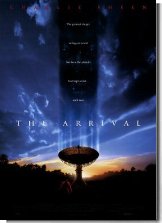
Whether you need some serious styling for your walls at home or work or are on the lookout to give someone a special gift they'll treasure forever, you support the work of Saturday Night Uforia whenever you shop for great posters from AllPosters.com from any link at this site -- any, each, and every time you start your shopping from here. You still get the same great deal as your friends and family, but a little will be sent back our way as a thank you from AllPosters.com. And you'll have the extra satisfaction of directly supporting the work of Saturday Night Uforia while treating yourself or friends to something special... like any of these great sci-fi movie posters (you can even have them mounted, laminated, or framed). Just click on the pic for a larger version...
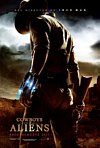








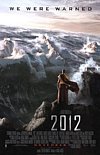
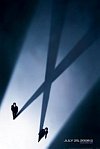
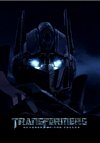

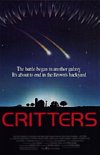
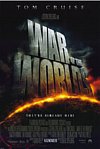






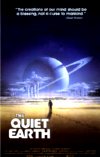

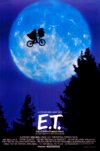
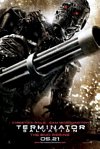

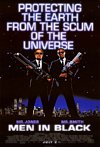
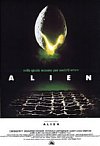






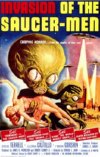
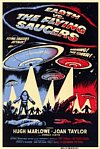





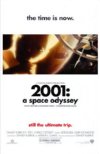
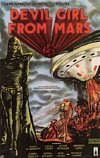

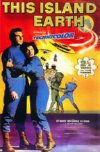
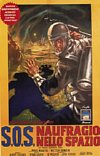

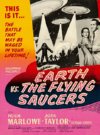

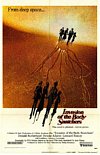
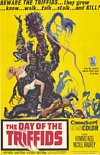
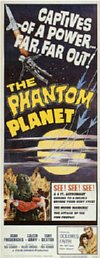

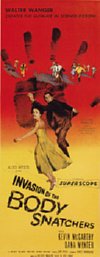



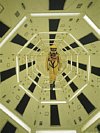



|




